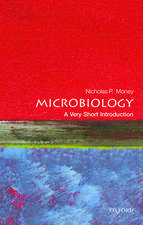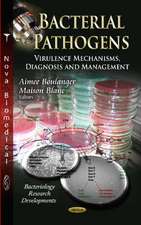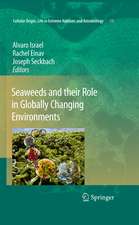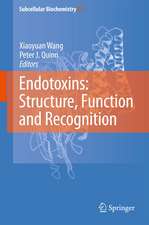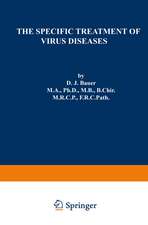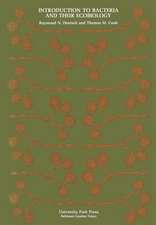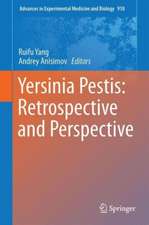Enigmatic Microorganisms and Life in Extreme Environments: Cellular Origin, Life in Extreme Habitats and Astrobiology, cartea 1
Editat de Joseph Seckbachen Limba Engleză Hardback – 28 feb 1999
| Toate formatele și edițiile | Preț | Express |
|---|---|---|
| Paperback (1) | 1432.90 lei 6-8 săpt. | |
| SPRINGER NETHERLANDS – 30 noi 2003 | 1432.90 lei 6-8 săpt. | |
| Hardback (1) | 1440.04 lei 6-8 săpt. | |
| SPRINGER NETHERLANDS – 28 feb 1999 | 1440.04 lei 6-8 săpt. |
Din seria Cellular Origin, Life in Extreme Habitats and Astrobiology
- 18%
 Preț: 1683.66 lei
Preț: 1683.66 lei - 18%
 Preț: 1839.32 lei
Preț: 1839.32 lei - 18%
 Preț: 1848.33 lei
Preț: 1848.33 lei - 18%
 Preț: 1839.32 lei
Preț: 1839.32 lei - 18%
 Preț: 1222.27 lei
Preț: 1222.27 lei - 18%
 Preț: 1232.26 lei
Preț: 1232.26 lei - 18%
 Preț: 2098.03 lei
Preț: 2098.03 lei - 18%
 Preț: 1228.29 lei
Preț: 1228.29 lei - 18%
 Preț: 2111.46 lei
Preț: 2111.46 lei - 24%
 Preț: 1076.39 lei
Preț: 1076.39 lei - 18%
 Preț: 1828.11 lei
Preț: 1828.11 lei - 18%
 Preț: 951.14 lei
Preț: 951.14 lei - 18%
 Preț: 1219.94 lei
Preț: 1219.94 lei - 18%
 Preț: 1235.08 lei
Preț: 1235.08 lei - 18%
 Preț: 1252.76 lei
Preț: 1252.76 lei - 18%
 Preț: 1263.01 lei
Preț: 1263.01 lei - 18%
 Preț: 956.50 lei
Preț: 956.50 lei - 18%
 Preț: 956.03 lei
Preț: 956.03 lei - 18%
 Preț: 1234.46 lei
Preț: 1234.46 lei - 18%
 Preț: 1122.58 lei
Preț: 1122.58 lei - 15%
 Preț: 646.11 lei
Preț: 646.11 lei - 18%
 Preț: 1840.91 lei
Preț: 1840.91 lei - 18%
 Preț: 1231.16 lei
Preț: 1231.16 lei - 18%
 Preț: 1251.50 lei
Preț: 1251.50 lei - 18%
 Preț: 961.41 lei
Preț: 961.41 lei
Preț: 1440.04 lei
Preț vechi: 1515.83 lei
-5% Nou
Puncte Express: 2160
Preț estimativ în valută:
275.59€ • 286.65$ • 227.51£
275.59€ • 286.65$ • 227.51£
Carte tipărită la comandă
Livrare economică 14-28 aprilie
Preluare comenzi: 021 569.72.76
Specificații
ISBN-13: 9780792354925
ISBN-10: 0792354923
Pagini: 687
Ilustrații: XXI, 687 p.
Dimensiuni: 155 x 235 x 38 mm
Greutate: 1.17 kg
Ediția:1999
Editura: SPRINGER NETHERLANDS
Colecția Springer
Seria Cellular Origin, Life in Extreme Habitats and Astrobiology
Locul publicării:Dordrecht, Netherlands
ISBN-10: 0792354923
Pagini: 687
Ilustrații: XXI, 687 p.
Dimensiuni: 155 x 235 x 38 mm
Greutate: 1.17 kg
Ediția:1999
Editura: SPRINGER NETHERLANDS
Colecția Springer
Seria Cellular Origin, Life in Extreme Habitats and Astrobiology
Locul publicării:Dordrecht, Netherlands
Public țintă
ResearchCuprins
I. In the Beginning: Origin and Evolution of the First Cells.- 1: Tracing the Relationships among the Eubacteria using ?70- Type Sigma Factors.- 2: Gene Transfer in Early Evolution.- 3: The Evolution of Algae.- 4: From Bacteria to Protista.- 5: Eukaryogenesis: The Search for an Evolutionary Transition towards Intelligence in an Extreme Environmental Habitat of the Outer Solar System.- 6: Fossil Bacteria.- 7: Growth and Organisms in Ammonia: Kakabekia, a Microbial Enigma.- II. Enigmatic Microorganisms.- 8: Enigmatic Unicellular Protista: Are They Really Enigmatic? The Algae Case.- 9: The Prochlorophytes — An Algal Enigma. Biology of Chlorophyll a/b Containing Photosynthetic Prokaryotes.- 10: Cryptomonad Systemastics — An Algal Enigma?.- 11: The Organellar Genomes of Cyanidioschyzon merolae.- III. The Versatile Extension of Life.- 12: The Versatility of Microorganisms.- 13: Eukaryotic Cells under Extreme Conditions.- 14: The Poikilotrophic Micro-Organism and its Environment. Microbial Strategies of Establishment, Growth and Survival.- 15: The Study of Enigmatic Microbial Communities.- 16: Nanobacteria and Man.- 17: An Enigma in Marine Nanoplankton. The Role of Star-Like Structures Produced by Phaeocystis.- 18: Algal Versatility in Various Extreme Environments.- IV. Microorganisms in Extreme Environments.- Dryness.- 19: Enigmatic Desert Soil Algae. Soil Algal Flora of the Western U.S.A. and Baja California, Mexico.- 20: Life in the Rocks — Endolithic Algae.- 21: Lithobionts in the Eastern Mediterranean.- Temperature Effects.- i. Thermophiles.- 22: Fine Structure of Hyperthermophilic Prokaryotes.- 23: The Phylogeny of Thermophiles and Hyperthermophiles and the Three Domains of Life. The Phylogeny of Thermophiles.- 24: Life in the Extreme: New Prokaryotes Living inHigh Temperature Low pH Environments.- ii. Psychrophiles.- 25: Psychrophilic Yeasts.- 26: Antarctic Microfungi.- Halophiles.- 27: The Enigma of Square and Triangular Halophilic Archaea.- 28: Microbial Life in the Dead Sea.- 29: Salt Sensitivity of Cells.- 30: Survival of Halophilic Bacteria in Ancient Salts: Possibilities and Potentials.- 31: Dunaliella ?-Carotene. From Science to Commerce.- 32: Haloarchaeal Growth Physiology.- Living in Enormous pH Ranges.- i. Acidophiles.- 33: The Cyanidiophyceae: Hot Spring Acidophilic Algae.- 34: Revision of Comparative Traits for the Acido- and Thermophilic Red Algae Cyanidium and Galdieria.- 35: Mechanism and Evolution of Organelle Division.- 36: Dunaliella Acidophila — A Most Extreme Acidophilic Alga.- ii. Alkalophiles.- 37: Alkaliphilic Microorganisms.- Barophiles.- 38: A Global Perspective on the Microbial Abundance and Activity in the Deep Subsurface.- 39: Membrane-Based Adaptions of Deep-Sea Piezophiles.- 40: Chemoautotrophic Bacteria — Marine Invertebrate Symbioses. Adaptions for Autotrophic Carbon and Nitrogen Assimilation.- V. Effect of Substances, Gases and Irradiatons.- 41: Growth of Extremophiles on Petroleum.- 42: Metallogenium — A Microbial Enigma.- 43: Microbes and Radiation.- 44: The Unknown Life of Airborne Algae.- VI. Living Together: Symbiosis.- 45: Organisms Living inside Others. The Symbiotic Wonders.- 46: Symbiogenesis of Bacteria within Amoebae. Symbiogenesis in Amoebae.- 47: Symbiotic Associations between Metanogenic Archaea, Protists and Metazoa: Evolutionary Implications.- 48: Cyanobacteria in Symbioses with Plants and Fungi.- 49: The Hard Life of Prokaryotes in the Leaf Cavities of Azolla.- 50: Freshwater Algal Symbioses in Protoza and Invertebrates.- 51: Intracellular Symbiotic Bacteria withinInsects.- 52: The Mysterious Interrelationships between Fungi and Plants: The Case of Endosymbionts.- VII. Index.
Recenzii
"It is a good reference source for traditional extreme habitats and also provides many novel topics, such as lab-induced endosymbiosis, and good review chapters on basic physiology and metabolism."
(European Journal of Phycology, 36 (2001)
(European Journal of Phycology, 36 (2001)
Caracteristici
Covers the fields of origin, evolution and phylogenesis from prokaryotic to eukaryotic cells Includes the symbiotic association between two or more organisms on the endocellular and exocellular levels

